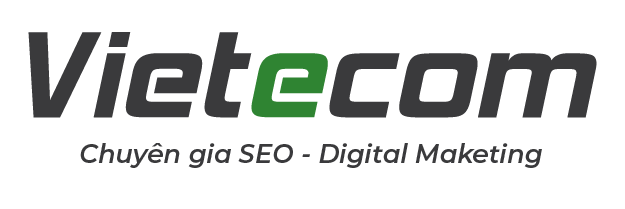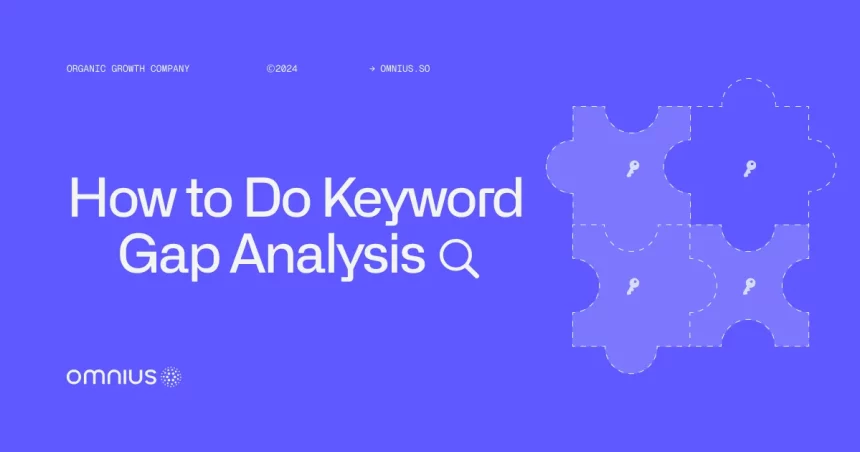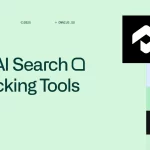Did you know that over 90% of web pages get no organic traffic from Google?
One major reason for this is the failure to target the right keywords.
Many businesses invest time and resources into creating content without fully understanding which keywords they’re overlooking, missing out on opportunities to gain visibility and drive traffic.
This is where a keyword gap analysis comes in.
In this article, you will learn how to do keyword gap analysis and always be one step ahead of your competitors.
Let’s start!
What is Keyword Gap Analysis?
Keyword gap analysis is a valuable SEO strategy that helps you compare your website’s keywords with those of your competitors.
By doing this, you can identify areas where your competitors are performing better, such as topics or keywords they cover that you haven’t yet addressed.

Typically done using competitor research tools, the aim is to discover high-value keywords they are ranking for, so you can leverage them in your content strategy.
This process helps you close the gap in search rankings and improve your position.
Importance of Keyword Gap Analysis
Performing keyword gap analysis is crucial for staying competitive in your niche.
If you don’t act, potential customers are more likely to find your competitors’ solutions instead of yours.
Taking your time to perform keyword gap research helps you:
- Identify new opportunities – Analyzing competitors’ keywords can help you find valuable search terms you’ve overlooked, including niche topics or low-competition keywords.
- Optimize time and budget – Instead of guessing, you can use competitor data to focus on keywords that are already proven to work, avoiding wasted time and money.
- Enhance content strategy – Identifying gaps in your content based on competitor keywords helps you create or update content that better meets your audience’s needs.
- Boost search visibility – Targeting missing keywords allows you to expand your reach in search results, driving more organic traffic to your site.
- Gain market insights – Keyword gap analysis offers insights into your audience’s interests, helping you fine-tune your products and messaging to better align with their needs.
Keyword Gap Analysis vs. Content Gap Analysis
Keyword gap analysis and content gap analysis are related but serve different purposes.
The key distinction is that a keyword gap analysis focuses on identifying specific keywords your competitors rank for, while a content gap analysis aims to find content topics that are missing on your site, often considering the entire customer journey.
For example, imagine you run a SaaS company offering CRM (Customer Relationship Management) software:
Through a keyword gap analysis, you might find that your competitors are ranking for keywords like:
- “CRM for small business automation”
- “best CRM for lead tracking”
- “free CRM with email integration”
These keywords drive traffic to your competitors, so optimizing your site to target these improves your visibility.
However, if you perform a content gap analysis, you’ll look beyond keywords to understand your customers’ broader needs throughout their journey.
This might reveal opportunities to create content that addresses their specific concerns, such as:
- “The ultimate guide to scaling customer relationships as your business grows”
- “How to choose the right CRM for your industry”
- “Customer success stories: How companies improved sales with CRM analytics”
- “Checklist for migrating data to a new CRM system without downtime”
How to Perform a Keyword Gap Analysis?
Here are 7 steps to perform a keyword gap analysis:
1. Build Your Competitor List
To start, compile a list of at least three competitors.
Include both direct competitors who offer the same products or services as you and SEO competitors who rank for the keywords you’re targeting.
Here’s how to find competitors:
- Check industry forums and social media groups, or ask your customers directly to see which brands they consider alternatives.
- Perform a quick Google search for your target keywords and note which businesses consistently rank at the top.
- Use SEO tools like Semrush or Ahrefs to discover which websites rank for the keywords you’re interested in.
- Consider hiring an SEO expert or agency to conduct thorough keyword research and competitor analysis.
2. Pick the Right SEO Tool
For effective competitive keyword analysis, you’ll need a reliable SEO tool.
These tools simplify the process of finding keyword opportunities and save you time.
Here are some reasons why it is important to find a reliable keyword gap tool:
- Instantly compare SEO reports to identify gaps and opportunities, saving you time.
- Help your CPC and SEO teams prioritize the most valuable keywords.
- Gain deeper insights into your audience’s interests and search behavior.
- Generate new content ideas to keep your website fresh and relevant.
Some tools that can help you with competitive keyword analysis are Ahrefs, Semrush, and SERanking.
3. Create a List of Keywords
Using an SEO tool makes generating a list of keywords easy.
These tools can also help you compare the keywords your competitors rank for with those you target.
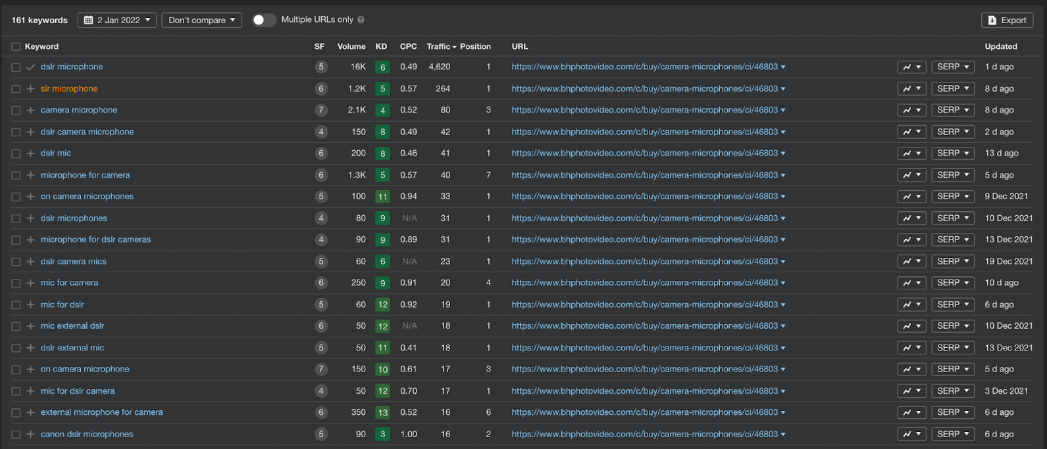
The best tools provide valuable insights to help you choose the most effective keywords to focus on.
Key details to consider include:
- Keyword search volume – Indicates the average number of times a particular word or phrase is searched for within a specific timeframe.
- Keyword difficulty – This metric shows how challenging it would be for your content to rank for a particular keyword.
- Competitive density – This metric ranges from 0 to 1 for paid search ads and shows how many advertisers compete for a specific keyword.
Make sure to collect all the keywords your competitors are ranking for so you don’t miss any key opportunities.
4. Evaluate Your Keywords
After compiling your list of keywords, the next step is to assess which ones you can realistically rank for.
Transfer your keyword list into a keyword gap analysis template to streamline this process and make the data easier to analyze.

Here’s how to identify the most promising keyword gaps:
- Choose keywords that align with content you can easily create or enhance your existing content.
- For high-value keywords, it’s best to avoid those that are highly competitive and difficult to rank for.
- Select target keywords that closely relate to your product, business, or the interests of your website visitors.
- Pay attention to search volume to determine which keywords your audience searches for most frequently.
5. Analyze Competitor Pages
Examine your competitors’ top-ranking pages to see what makes their content successful.
This approach will help you identify gaps or opportunities in your content strategy and allow you to apply what’s working for them to your site. It will also help you identify the potential they’re missing out on so you can use it in your favor.
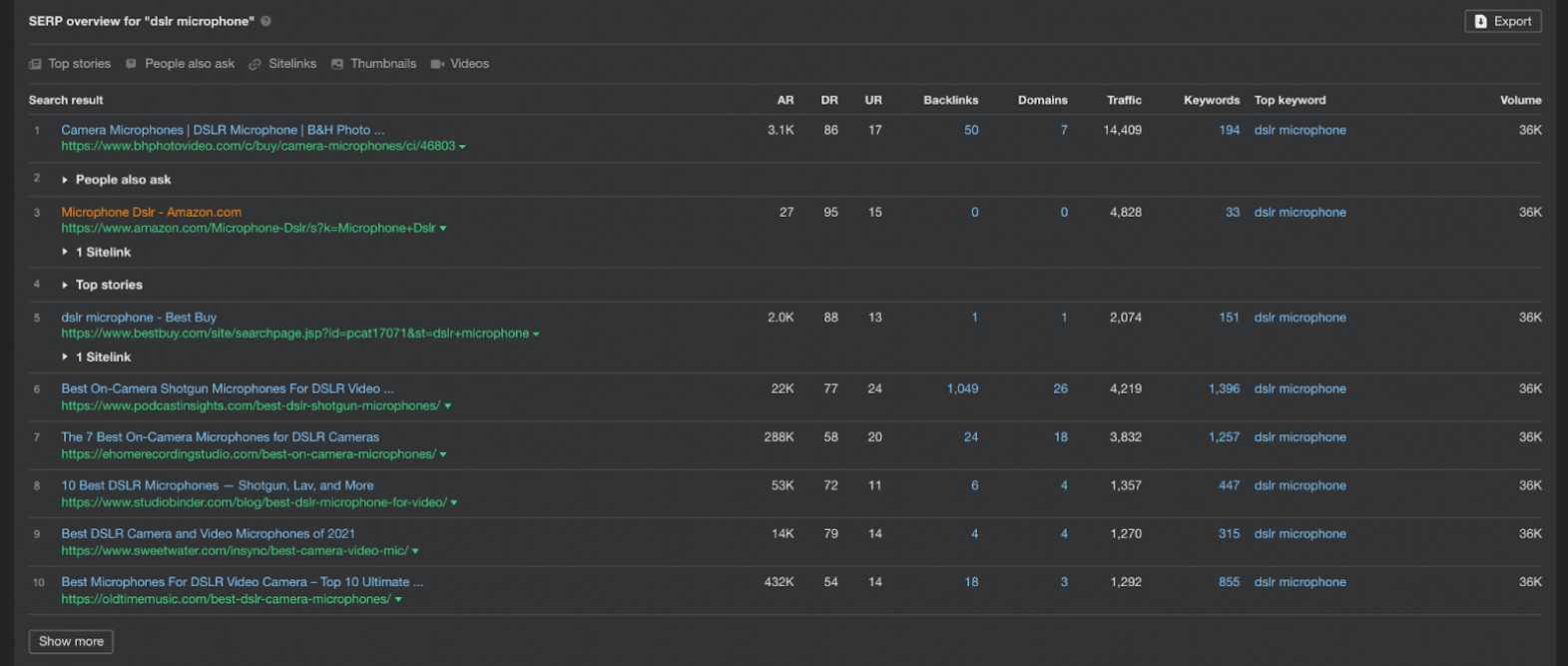
Here’s how to use insights from your page-by-page analysis:
- Improve your current content to boost its ranking potential.
- Focus on adding location-based keywords to attract local traffic.
- Create fresh and relevant content that targets new, relevant keywords you’ve identified.
6. Develop and Optimize Content
Now, it’s time to use your keyword gap analysis by creating high-quality, optimized content that aligns with what your audience is searching for.
Here are some tips to help you optimize your content:
- Identify which types of content, like videos, articles, or infographics, rank well and create similar ones.
- Strategically insert keywords into headers, meta titles, image alt texts, URLs, and throughout the text.
- Use variations of your primary keyword to maintain a natural flow and avoid keyword stuffing.
- Ensure your content’s length and format match those of other well-performing content in search results to align your content with the search intent.
7. Track Your Progress
Tracking and measuring your results is essential to understanding the impact of your keyword gap analysis on your organic search visibility and rankings.
Here are some steps to help you track your progress:
- Monitor key metrics – Keep an eye on important metrics like conversion rates and compare them with your previous performance.
- Analyze content effectiveness – Review the performance of different content formats, headings, and structures to see which strategies work best.
- Regularly update your analysis – Continuously update your keyword gap analysis to make necessary adjustments based on current performance and changing trends.
How Can Our Template Help You?
Performing a keyword gap analysis can feel overwhelming, especially considering the many details you need to keep track of.
However, using a keyword gap analysis template can help you stay organized by keeping all your keyword data, competitor insights, and other key information in one place.
Here’s how to use our template to conduct a keyword gap analysis:
1. Input Company and Competitor Names
Begin by filling in your company’s name and the names of your main competitors in the table.
Here’s how it looks on Myos example:

Ensure to include competitors directly relevant to your industry, target audience, and keywords relevant to your business and product.
2. Conduct Keyword Research on Competitors
Use keyword research tools such as Ubersuggest, SEMrush, or Ahrefs to extract a comprehensive list of keywords your competitors are ranking for.
Input these keywords into the template under the appropriate competitor columns.

Remember to be thorough and gather a broad list to ensure you’re not missing any critical keywords.
3. Identify Your High-Ranking Keywords
Compile a list of the keywords for which your company currently ranks well.
This information can be obtained from your site’s analytics or SEO tools that track keyword performance.
Input these keywords into the template under your company’s section.
4. “Ranked” or “Not Ranked”
For each keyword entered into the table, the company will automatically be classified as “Ranked” or “Not Ranked.”

This will help you identify overlooked keywords and areas for improvement.
5. Choose Keywords to Target
Analyze the keywords identified in the previous step based on search volume, keyword difficulty, and relevance to your business.
Focus on high-intent keywords first, as they can get you conversions fast. After that, you can focus on those with a high search volume but relatively low competition and those that closely align with your business objectives.
6. Implement Different Strategies
Develop and execute strategies to target the selected keywords effectively. This might involve:
- Content optimization – Update existing content to include new keywords or improve keyword density.
- New content creation – Write and publish new blog posts, articles, or landing pages focused on the selected keywords.
- SEO adjustments – Adjust meta tags, headers, and on-page elements to target the target keywords better.
- Backlink building – Seek opportunities to build backlinks using the new keywords to improve authority and ranking.
Who Can Benefit from This Keyword Gap Analysis Template?
This keyword gap analysis template is designed to help you easily consolidate and analyze keyword data for your business or clients.
This template is ideal if you’re:
- Digital marketing manager or part of the team – It can help you find the right keywords to create content that ranks high on search engine results pages (SERPs) and drives more organic traffic in competitors’ cases.
- Startups with low budgets – If you’re focused on maximizing your limited resources by identifying high-impact keywords and leveraging cost-effective SEO strategies to drive organic growth and signups in a short time.
- Small businesses – Who need a simple, free template to improve their SEO keyword research and strategy without investing in expensive tools.
Conclusion
Now that you know how to do a keyword gap analysis, you can start identifying the keywords your competitors rank for that you might be missing.
By strategically targeting these gaps and optimizing your content, you can significantly boost your rankings and visibility.
If you’d prefer expert guidance, the Omnius team is here to help.
Book a 30-minute call today to learn how to elevate your SEO and content strategy!
FAQ
What’s the best free keyword research tool?
The best free keyword research tool can vary depending on your needs, but some popular options are Google Keyword Planner, Ubersuggest, KeywordTool.io, and AnswerThePublic.
Each tool offers different features, so it’s important to pick the one that best suits your SEO goals.
Nguồn: omnius.so
